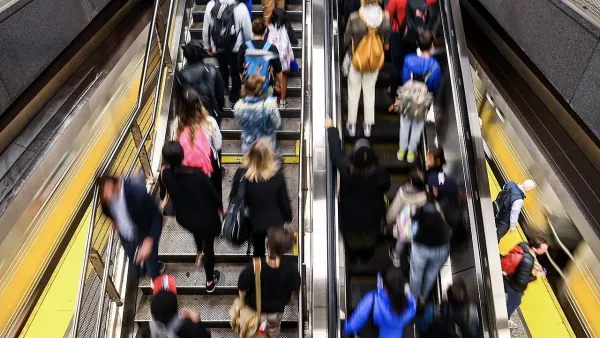What light is right? How much is too much? These questions don't typically get asked in cities, as they simply rely on what they've always done. But now the Municipal Art Society in New York is bringing these issues to the table.
"Sodium-vapor-or high-pressure sodium-lighting was Brandston's bad guy, what he calls "the lamp of least choice." He and the Municipal Art Society, under whose aegis he was conducting the tour, object to the color of the light-unlike whitish metal halide, high-pressure sodium burns yellow-orange. "There is this negative subliminal response," Brandston said. "The connotation, mainly, is crime." This month, the M.A.S. launched a campaign against the sodium lights. In a press release, Vanessa Gruen, from the M.A.S., asserted, "Yellow light muddies the colors of the surrounding neighborhoods and causes trees to look brown. It makes people feel less secure, because the colors around them are not true." Asked for comment, Seth Solomonow, a Department of Transportation spokesman, said that high-pressure sodium lights are durable and cost-efficient, and have been the city's default lights for thirty years.
In Brandston's view, an overreliance on instruments, instead of instincts, mars contemporary urban lighting plans, which should be determined not by how technically bright an area is but by how well someone standing in it can actually see. "We have, over time, overlighted everything in America," he told the tour group. Cities, he said, should be thought of as rooms without ceilings."
FULL STORY: Light Fight

Planetizen Federal Action Tracker
A weekly monitor of how Trump’s orders and actions are impacting planners and planning in America.

Chicago’s Ghost Rails
Just beneath the surface of the modern city lie the remnants of its expansive early 20th-century streetcar system.

Amtrak Cutting Jobs, Funding to High-Speed Rail
The agency plans to cut 10 percent of its workforce and has confirmed it will not fund new high-speed rail projects.

Ohio Forces Data Centers to Prepay for Power
Utilities are calling on states to hold data center operators responsible for new energy demands to prevent leaving consumers on the hook for their bills.

MARTA CEO Steps Down Amid Citizenship Concerns
MARTA’s board announced Thursday that its chief, who is from Canada, is resigning due to questions about his immigration status.

Silicon Valley ‘Bike Superhighway’ Awarded $14M State Grant
A Caltrans grant brings the 10-mile Central Bikeway project connecting Santa Clara and East San Jose closer to fruition.
Urban Design for Planners 1: Software Tools
This six-course series explores essential urban design concepts using open source software and equips planners with the tools they need to participate fully in the urban design process.
Planning for Universal Design
Learn the tools for implementing Universal Design in planning regulations.
Caltrans
City of Fort Worth
Mpact (founded as Rail~Volution)
City of Camden Redevelopment Agency
City of Astoria
City of Portland
City of Laramie





























